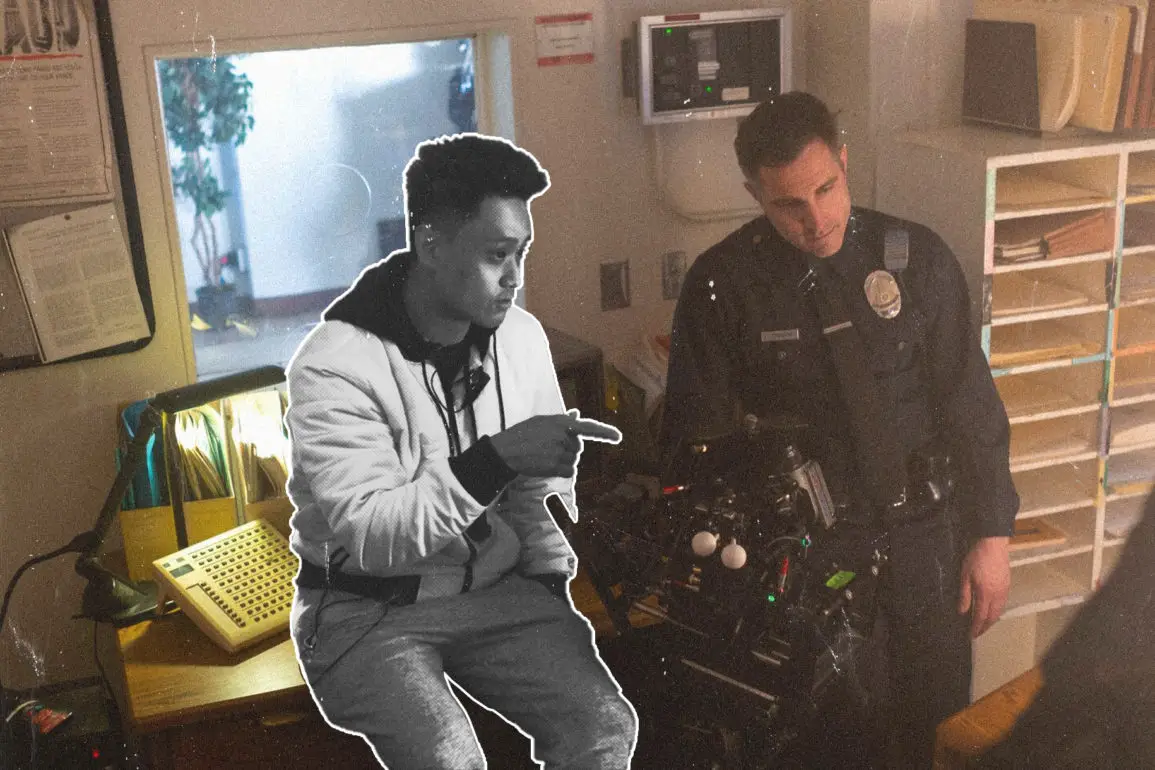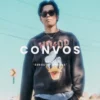Award-winning Asian filmmaker, Jacky Song, captivatingly transports us back to the ’50s in his latest provocative, mind-bending short film Incognito (2021). We got a chance to talk to him about his journey to becoming a filmmaker, lessons he’s learned along the way, his biggest inspirations, how he developed Incognito, and more.
How did you start your career as a filmmaker?
Jacky Chan’s early foray into Hollywood and his success in the film industry sparked my unwavering and extensive interest in filmmaking when I was in elementary school. Growing up, I watched pretty much all of the work he made in Hong Kong, Hollywood, and later in other countries. His perseverance, fearlessness, and the fact that he never used stunt doubles in performing life-threatening scenes became my biggest inspiration. I wanted to emulate his career path. It became a tipping point in my life.
Chan’s intrepid, undaunted spirit, even after sustaining severe injuries over and over, followed by a series of filming tasks required of him on set, not only awakened my true passion for martial arts but spurred my enthusiasm for filmmaking and the Hollywood industry. Soon after my first encounter with Chan on a movie theater screen, I officially kicked off my journey in martial arts and was trained competitively in the elementary and middle school teams. Eventually, after I had spent six years on extensive martial arts training, my parents’ vehement opposition to my pursuit to be a professional athlete brought my dream career — martial arts — to an end, even though I had already garnered a slew of state-level honors and medals in numerous martial arts competitions. While my ambition for a martial arts career was completely smothered, I channeled Chan’s filmmaking ethos into my academic studies in an international high school with a British academic grading system, hoping that one day I could be a valuable asset in the film industry. Fortunately, I was accepted into a top-tiered film program for my college education thanks to Chan’s intangible and psychological support.
Fast forward to my junior year, I was given the privilege of filling my schedule with all the film-relevant courses: screenwriting, production, cinematography, editing, American film history, etc. I was over the moon. I crafted a 20-minute short film during my junior year with fellow students at our film school, which was selected for half a dozen film festivals across the nation. Before that, I had already made four independent short films both in China and Los Angeles, so collaborating with creative heads and roaming around a film set seemed very natural for me.
My first feature script was completed in the screenwriting program at the University of Southern California, where I spent three months writing a full-length 100-page screenplay. I also took a number of entertainment management classes, which helped me look at the studio system and the mysteries of Hollywood production through a business lens. This unforgettable experience enhanced my story-crafting skills in the narrative genre and paved the way for me to gestate my thesis film – Incognito. A few months after I completed the script, I buckled down to bringing my thesis film to reality. The story was based on true events and had been lingering in my mind for almost half a year. Soon it struck me that creating a short film had never been more within reach thanks to the experience writing that feature script – it was a lead-pipe cinch to accomplish a 30-page drama-mystery piece.
Congratulations on your short film Incognito! Can you walk us through the process of preparing for the role? What were the challenges and breakthroughs you’ve encountered along the way, and how did you overcome it? What was your biggest takeaway from this experience?
I conducted a considerable volume of research before mapping out my thoughts on the script. I dug into law enforcement jargon, mental institution protocols and social customs, mores, and lifestyles of the ’50s and ’90s to construct vivid scenes that match those periods. I also referenced a myriad of classic movies in hopes of taking cues from the distinctive camera techniques that were used by reputable auteurs. But most importantly, I gathered reams of feedback from my team and my mentors.
During the entire project, I always asked myself if this film would be convincing enough for the audience. Can we push beyond the limitation of filmmaking techniques? Does the dialogue fit the scene? Can the camera movement be improved to better service the characters’ emotions and the story? I always remind myself of a mantra from a former Disney CEO Bob Iger, whom I admire inordinately, when I am making a film: the relentless pursuit of perfection.
Early in the pre-production phase, I underestimated the difficulties we would face while tackling with the initial planning of all the production execution. Being confident and sanguine are important traits for a leader to exhibit, but overconfidence can be detrimental and self-destructive. No matter how far technology takes us, a film’s completion requires a team of respectful collaborators. I experienced this first hand when I just started breaking down the shotlist, where I quickly, and willingly went from director to crew member, and realized that valuable input can come from the most unlikely of places. The first challenge we experienced was a technical impossibility, then an emergency forced us to clear the entire set. But the most challenging obstacle was the planning and execution of a complex, and potentially dangerous car crash scene, which revealed a weakness I’d been harboring for some time.
Incognito was to open with a three-minute tracking shot. Starting from a panorama of Downtown L.A., the camera descends, to track two police officers driving a Crown Vic, while chatting about the job. They park, and exit the vehicle, and we transition seamlessly from the interior of the vehicle, through the mouth of an alley, still following the officers. We had to detach an Alexa Mini from the car’s window in five seconds, then use a Steadicam to complete the shot without an edit. When I explained the shot to the production team, it seemed that the demonstration had left them totally flabbergasted and most of them deemed it impossible.
After a month of debating and experimentation, we decided to move on with breaking down each shot traditionally, one by one. Then I discovered an emerging technology called the Motocrane. The MotoCrane was brand-new, wireless technology that would enable me to execute my original shot as planned. We held multiple meetings and walked through every step of camera movement utilizing the new equipment. We blocked off the street so I could rehearse with the technicians from Motocrane. They were very patient with me, and we were off to a good, if delayed, start.
How long did it take you to write and develop the story? What inspired you to make it? Were there particular circumstances or personal experiences that shaped the narrative? How do you think this story will change and make an impact in today’s society?
My inspiration for Incognitio may stem from my raw exploration into the world undertaken since my childhood. Even now, I still find myself recollecting the days when I sat on the cracked floor in a cramped and congested apartment with worn-out furniture where I relished period dramas on a bulky TV. There, standing in front of a solar system map, I ruminated about the wondrous universe. My early life was heavily imbued with non-fiction books that chronicled the world’s strangest unsolved mysteries. One of the most thrilling missions to accomplish every night before I snuggled into the anti-mosquito tent was to dive into the book world filled with unusual sightings and supernatural terms. That was my first time learning the term ‘time traveling.’
During my stint in college in Los Angeles, my enthusiasm for movies and TV programs inspired by true events held up, especially for weird histories and paranormal activities such as those depicted in the movie Interstellar. Representations of true events, such as the TV series Chernobyl and Mindhunter, later sparked my profound interest in writing my own version corresponding to my initial preoccupation with mystery themes.
I started by digging into dozens of strange events at first, but none of them sat right with me until I came across a YouTube video about a self-proclaimed time traveler who was locked up in an asylum in the ’90s after being diagnosed with a chronic mental disorder when, in fact, she had been telling the truth. That video immediately aroused my burning curiosity and got me hooked. Though the original concept of the screenplay is quite straightforward, I added a string of twists and turns to enrich the storyline that forms the prototype of this movie.
As for me, I intend to not only create something cinematic for the audience to watch but also paint a revealing picture of a strange event about time traveling as well as tapping into some socially relevant issues that people have faced in the past.
The cinematography and visual aesthetics of Incognito were extremely captivating and meticulously designed. Was this your intended artistic vision for the film from the beginning?
Yes, my directing style dictates my individuality. I find I’m fully prepared for every shot, frame, and blocking from the outset. I created a lookbook which encompassed visual references, costume expectations, a color template for the production design, and a basic visualization for each scene breakdown to ensure the other team members could capture my vision accurately.
What was the collaboration process like with your Director of Photography, Production Designer, Editor, and the rest of your team?
There are a few things that I found most gratifying and collaborative during the pre-production of Incognito: simulating actors’ blockings and camera movement in a 3D animation software; running through the shot list with the cinematographer and drafting storyboards; and hosting a table read and rehearsals with actors. Once we reached the second phase of the pre-production, we started to conduct location scouts and tech scouts with all the creative heads, after which I revised the shot list in alignment with the actual shooting environment. We jumped through hoops and went through rough patches just as most productions inevitably encounter.
I aim to create riveting camera angles and movements that require flawless timing, hitting marks, and collaborations from every person on set. I remember the toughest shot was the opening scene in which a three-minute-long shot was to be filmed for an entire day. We spent roughly a month trying to find a solution to some technical impossibilities. Unlike animation where you can move the camera wherever you intend it to go without a cut, shot design in live action requires tremendous planning and collective deliberation for the shooting environment. And oftentimes some camera movements are just too ambitious to be implemented with in-camera tricks and on-set sleight of hand. In addition, utilization of heavy VFX was not in our consideration because of a limited budget, so it was not unusual for me to be advised to cut out the long shot. Eventually, we were able to figure something out after a prolonged amount of time for brainstorming.
The car crash scene, on the other hand, could have been executed better had we solved the logistic issue from the get-go. Due to an oversight, 80% of the car crash scene was filmed on an ad hoc basis. Much of the extemporaneous work was devoted to actualization of vehicle maneuvering, as there was a change in plan on the day of the shooting. And I am very grateful that my team stood by my side and worked this out together. Overall, it was a blast to work with everyone on this project, and I truly gained incredible experience from grappling with unforeseen impediments and setbacks.




